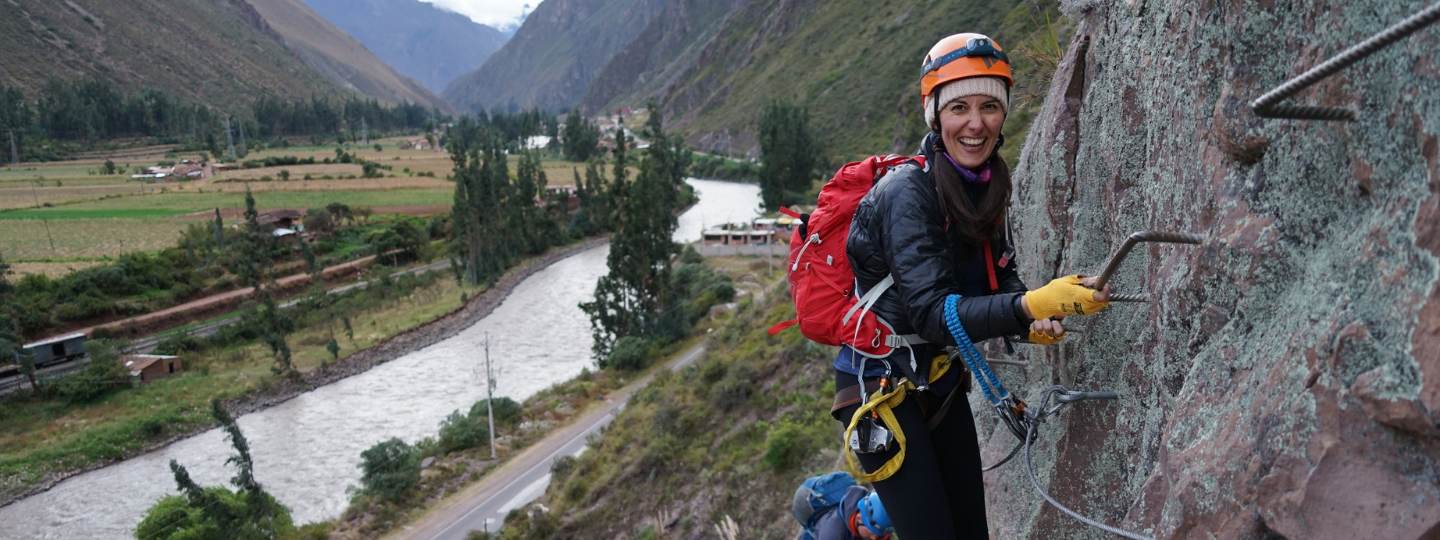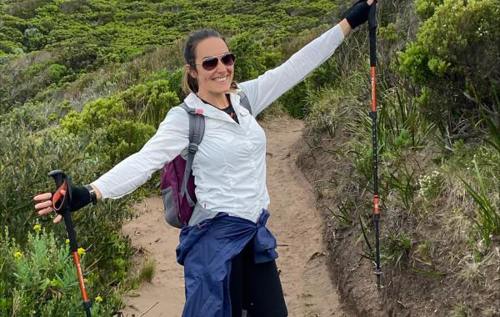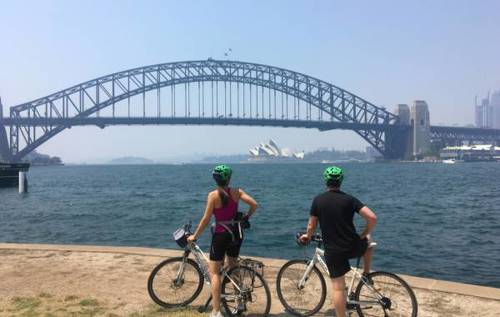“It’s important to get a label”: How Pippa’s osteoarthritis diagnosis helped her understand her knee pain
28 November 2023
Pippa, 36, has recently been diagnosed with patellofemoral arthritis, a type of osteoarthritis that affects the cartilage of the kneecap (or patella).
After years of knee pain, operations and changes to Pippa’s exercise routine, getting a formal diagnosis felt very significant.
Pippa shares why the diagnosis means so much to her and how she’s learnt to manage her chronic pain.
Living with knee pain
 Pippa has had issues with her knee since the age of 16. She had her first knee operation at the age of 18, and has had five knee operations since.
Pippa has had issues with her knee since the age of 16. She had her first knee operation at the age of 18, and has had five knee operations since.
“The first knee operation I had caused a lot of the damage,” says Pippa.
“My knee was dislocating so they moved one of the tendons. Within a year I was having dreadful issues. Since then, screws had to come out and I’ve had a few more keyhole surgeries.
“My muscles are freezing on the left, right and underneath my kneecap. It’s putting strain on my back and leg.”
Pippa finds the pain particularly bad when walking downhill. When she moves around and the muscles seize, it links to her hip.
“The seizing is agony,” she says. “It’s toe-curling.”
Getting diagnosed with osteoarthritis
One of the most frustrating things for Pippa was that no one would tell her exactly what was wrong with her knee.
“I’ve had it called ‘wear and tear’ to someone saying, ‘of course it’s arthritis’”, she says. “I’ve been told that it’s inflammation and damage as well.”
But things finally started to look up for Pippa after she had an MRI scan on her knee. During this appointment, she pushed for a formal diagnosis. Once the results came back, she was given the diagnosis of patellofemoral osteoarthritis.
Osteoarthritis can affect any joint in the body. While our joints are made of complex living tissue that our bodies constantly repair and maintain, osteoarthritis occurs when our bodies can no longer do this effectively.
The cartilage becomes thin, and the joint cannot move as easily as before, causing pain, stiffness and sometimes swelling as the body attempts to repair the joint.
Pippa finds the osteoarthritis diagnosis both “good and frustrating.”
“It’s frustrating because the answer seems to be ‘live with the pain’ and I’m honestly a little exhausted from that,” she says.
“Not having a proper diagnosis is a really poor reflection on medical professionals. There’s been no consistent language."
“Until recently, I couldn’t tell you I definitely had arthritis in my right leg. It’s important to get a label.”
Adjusting her exercise routine
 Pippa is a huge advocate for exercising, but she’s found that certain movements, like walking downhill, impact her knee.
Pippa is a huge advocate for exercising, but she’s found that certain movements, like walking downhill, impact her knee.
Keeping active has been proven to help reduce pain and improve your muscle strength. However, it’s important to find exercises that work for you and don’t add to your arthritis pain.
“My knee inflames so quickly with any form of exercise,” says Pippa. “When I’m walking down a hill, my knee is bothered. It’s painful to the point that I stop putting weight on my knee.”
Getting the osteoarthritis diagnosis has helped Pippa to change her exercise routine to reduce her pain. She has also found equipment to help her when exercising.
“I’m having to drastically change my exercise regime, so I’ll see how that pans out,” says Pippa. “I’m much more accepting now. I understand I don’t have a knee I can go running with or play netball and tennis.
“I still climb hills which I probably shouldn’t do as the downhill is brutal. But I’ve got some really cool walking sticks called Pacerpoles which make you put weight on your arms. They work effectively and make you use your upper body better.
“I’m also investigating compression socks at the moment. It’s like you’re putting on a thigh high boot. You switch it on and it compresses your leg.”
Mindfulness
Like many people who deal with daily pain, Pippa’s mental health can be impacted when her osteoarthritis pain is particularly bad.
“Exercise is a huge driver for my mental health,” she says, “which isn’t great considering I have to cut back.”
But Pippa has found mindfulness practices to be a huge help.
“I’m trying to put wellness practises in,” she says. “I’ve found yoga and mindfulness. I use the app Headspace a lot. I started taking ice baths for the first time ever too.
"I’m checking in on how I’m feeling, working on breathing, being more aware of it instead of it being in the back of my mind.
“I’ve bought some positive affirmation cards. They arrived yesterday and they’re just simple single sentences on a card, but it helps me focus. Just putting one out on my desk is helpful. When I’m struggling to focus, I can look at it and remember I might feel broken right now, but I won’t always feel this way. It helps me ground myself.
“I’ve had a bit of a hard time of it lately and the root cause of it all is my knee. But I enjoy reading and doing Lego. I found a few pieces in lockdown and it’s really soothing. My cats are my world, too.”
We’re here whenever you need us
- If you need advice or support, you can call our free helpline on 0800 5200 520
- Chat to our Arthritis Virtual Assistant
- Join our online community
- Stay in touch and follow us on X (Twitter), and Instagram. Facebook and Instagram.